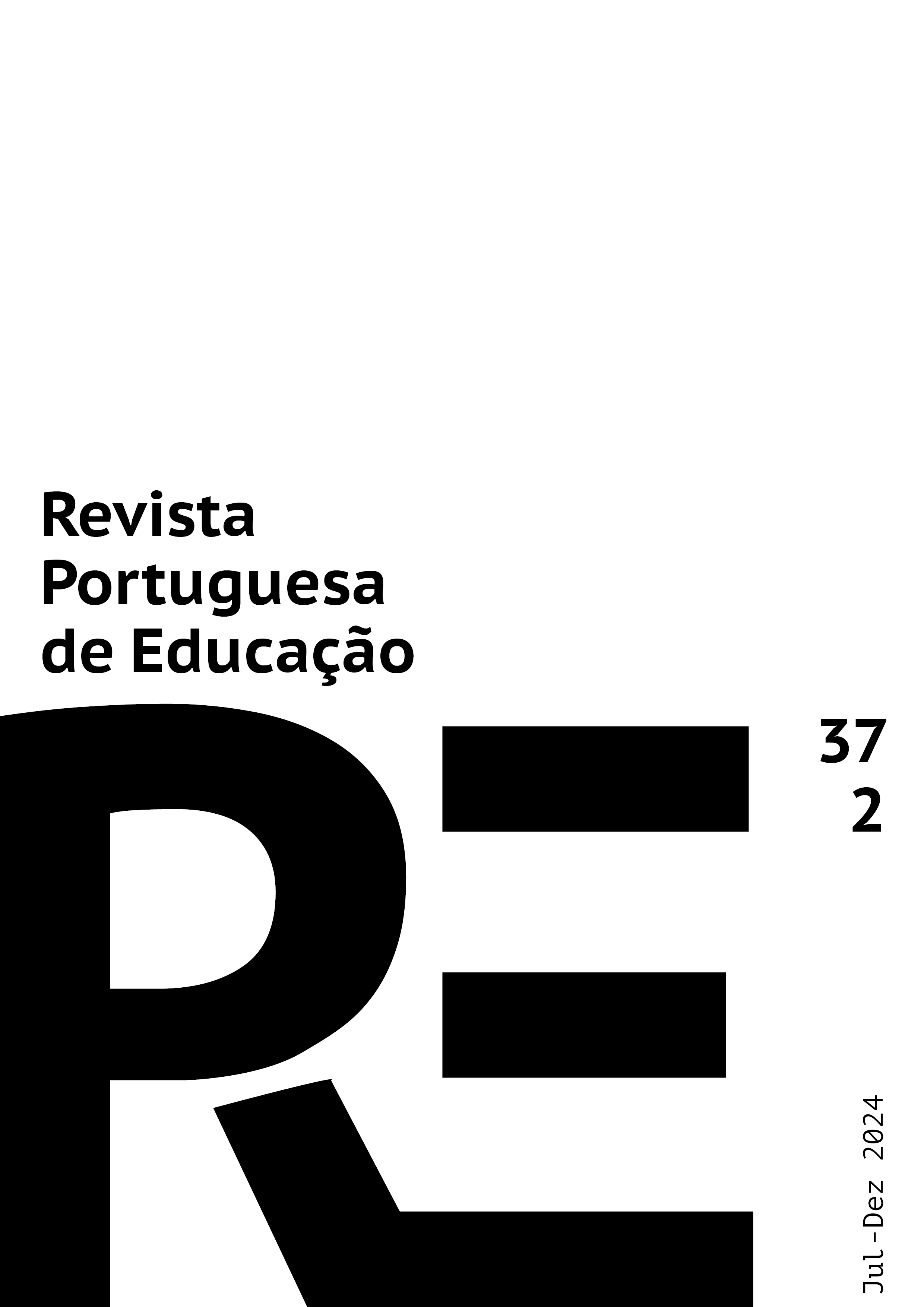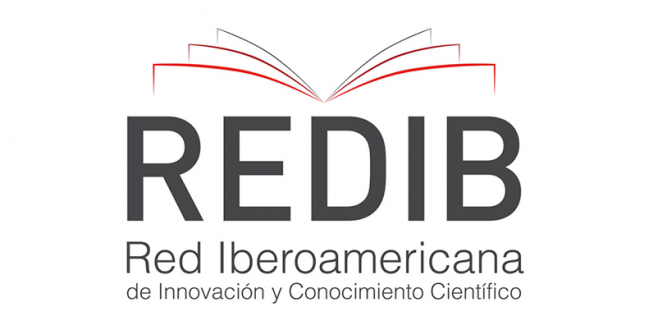Repensando a oralidade em ELI: Qual o lugar da inteligibilidade na sala de aula de ILE?
DOI:
https://doi.org/10.21814/rpe.32003Palavras-chave:
Inglês como Língua Estrangeira, Oralidade, Inteligibilidade, Sala de aula, Práticas de ensinoResumo
A aprendizagem de uma Língua Estrangeira (LE) é, em regra, vista pelos especialistas como um ativo importante para a compreensão global e a mobilidade das pessoas. O inglês encontra-se no topo da pirâmide como o idioma número um para atingir esses objetivos. Atualmente, ser capaz de se expressar de forma inteligível em inglês é decisivo para os estudantes que desejam prosperar tanto académica quanto profissionalmente. De facto, o conceito de inteligibilidade está agora firmemente estabelecido no campo da linguística aplicada como um dos fatores-chave para explicar o sucesso ou não na comunicação entre interlocutores de origens culturais e linguísticas diversas. Assim, a essência deste artigo reside na análise das práticas de ensino comunicativas de professores de inglês como língua estrangeira e como elas se refletem na proficiência e inteligibilidade da oralidade dos alunos. Os resultados mostram que o inglês continua a ser ensinado com pouca atenção ao seu uso no mundo real, criando uma lacuna entre as necessidades/expectativas dos alunos e a sua verdadeira aprendizagem. No geral, o artigo foca a necessidade de uma reconceptualização da oralidade, tendo por base o papel da inteligibilidade no mundo coevo em que vivemos. O artigo funciona como um desafio às visões tradicionais sobre práticas de ensino/aprendizagem ao reivindicar a necessidade de repensar as abordagens para a proficiência oral dos alunos com base no princípio da inteligibilidade.
Downloads
Referências
Abercrombie, D. (1949). Teaching pronunciation. English Language Teaching, III(5), 113-122. https://doi.org/10.1093/elt/III.5.113
Anderson-Hsieh, J., & Koehler, K. (1988). The effect of foreign accent and speaking rate on native speaker comprehension. Language Learning, 38(4), 561-593. https://doi.org/10.1111/j.1467-1770.1988.tb00167.x
Bent, T., & Bradlow, A. R. (2003). The interlanguage speech intelligibility benefit. Journal of the Acoustical Society of America, 114(3), 1600-1610.https://doi.org/10.1121/1.1603234
Björkman, B. (2014). An analysis of polyadic English as a Lingua Franca (ELF) speech: A communicative strategies framework. Journal of Pragmatics, 66, 122-138. https://doi.org/10.1016/j.pragma.2014.03.001
Bradlow, A. R., & Pisoni, D. B. (1999). Recognition of spoken words by native and non-native listeners: Talker-, listener-, and item-related factors. Journal of the Acoustical Society of America, 106(4), 2074-2085. https://doi.org/10.1121/1.427952
Cogo, A., & Dewey, M. (2012). Analysing English as a Lingua Franca: A corpus-driven investigation. Continuum.
Cogo, A., & House, J. (2018). The pragmatics of ELF. In J. Jenkins, W. Baker & M. Dewey, The Routledge handbook of English as a Lingua Franca (pp. 210-223). Routledge.
Correia, R. C. (2015). Classroom anxiety and young language learners: Broadening the scope of the research agenda. Humanising Language Teaching, 17(4). http://old.hltmag.co.uk/aug15/sart02.htm
Council of Europe. (2001). Common European Framework of Reference for Languages: Learning, Teaching, Assessment. Cambridge UP. http://www.coe.int/lang-CEFR
Council of Europe. (2018). Common European Framework of Reference for Languages: Learning, Teaching, Assessment - Companion Volume with New Descriptors. Council of Europe Publishing. http://www.coe.int/lang-CEFR
Council of Europe. (2020). Common European Framework of Reference for Languages: Learning, Teaching, Assessment - Companion Volume. Council of Europe Publishing. https://www.coe.int/en/web/common-european-framework-reference-languages
Cruz, N. C. (2007). Terminologies and definitions in the use of intelligibility: State-of-the-art. Revista Brasileira de Linguística Aplicada, 7(1), 149-159. http://www.redalyc.org/articulo.oa?id=339829600008
De Jong, N. H., Steinel, M. P., Florijn, A. J., Schoonen, R., & Hulstijn, J. H. (2012). Facets of speaking proficiency. Studies in Second Language Acquisition, 34(1), 5-34. https://doi.org/10.1017/S0272263111000489
Derwing, T. M., & Munro, M. J. (2005). Second language accent and pronunciation teaching: A research-based approach. TESOL Quarterly, 39(3), 379-397. https://doi.org/10.2307/3588486
Derwing, T. M., & Munro, M. J. (2015). Pronunciation fundamentals: Evidence-based perspectives for L2 teaching and research. John Benjamins.
Eberhard, D. M., Simons, G. F., & Fennig, C. D. (2022). Ethnologue: Languages of the World (25th Ed.). SIL International.
Fayer, J. M., & Krasinski, E. (1987). Native and nonnative judgments of intelligibility and irritation. Language Learning, 37(3), 313-326.https://doi.org/10.1111/j.1467-1770.1987.tb00573.x
House, J. (2022). The pragmatics of English as a Lingua Franca. Applied Pragmatics, 4(2), 121-136. https://doi.org/10.1075/ap.00005.hou
Isaacs, T., & Trofimovich, P. (Eds.). (2017). Second language pronunciation assessment: Interdisciplinary perspectives. Multilingual Matters. https://www.researchgate.net/publication/310465751_Second_language_pronunciation_assessment_Interdisciplinary_perspectives
James, C. (1998). Errors in language learning and use: Exploring error analysis. Longman.
Jenkins, J. (2000). The phonology of English as an International Language: New models, new norms, new goals. Oxford Universit Press.
Jenkins, J. (2002). A sociolinguistically based, empirically researched pronunciation syllabus for English as an International Language. Applied Linguistics, 23(1), 83-103. https://doi.org/10.1093/applin/23.1.83
Jenkins, J. (2014). English as a Lingua Franca in the international university: The politics of academic English language policy. Routledge.
Kennedy, S. (2017). Using stimulated recall to explore the use of communication strategies in English as a Lingua Franca interactions. Journal of English as a Lingua Franca, 6(1), 1-27. https://doi.org/10.1515/jelf-2017-0004
Kenworthy, J. (1987). Teaching English pronunciation. Longman. https://zourpri.files.wordpress.com/2014/01/teaching-english-pronunciation.pdf
Kirkpatrick, A. (2010). English as a Lingua Franca in ASEAN: A multilingual model. Hong Kong University Press.
Levis, J. M. (2006). Pronunciation and the assessment of spoken language. In R. Hughes (Ed.), Spoken English, Applied Linguistics, and TESOL: Challenges for theory and practice (pp. 245-270). Palgrave Macmillan.
Levis, J. M. (2018). Intelligibility, oral communication, and the teaching of pronunciation. Cambridge University Press.
Morley, J. (1991). The pronunciation component in teaching English to speakers of other languages. TESOL Quarterly, 25(3), 481-520. https://doi.org/10.2307/3586981
Nelson, C. L. (2011). Intelligibility in world Englishes: Theory and application. Routledge.
Newbold, D. (2021). English Lingua Franca: New parameters for the teaching (and testing) of English pronunciation?. EL.LE, 10(3), 393-410. https://doi.org/10.30687/ELLE/2280-6792/2021/03/003
Piccardo, E. (2016). Common European Framework of Reference for Languages: Learning, Teaching, Assessment - Phonological Scale Revision Process Report. Education Department. Strasbourg: Council of Europe – Language Policy. www.coe.int/lang-cefr
Reid, K. T., Trofimovich, P., & O’Brien, M. G. (2019). Social attitudes and speech ratings: Effects of positive and negative bias on multiage listeners’ judgments of second language speech. Studies in Second Language Acquisition, 41(2), 419-442. https://doi.org/10.1017/S0272263118000244
Sheppard, B. E., Elliott, N. C., & Baese-Berk, M. M. (2017). Comprehensibility and intelligibility of international student speech: Comparing perceptions of university EAP instructors and content faculty. Journal of English for Academic Purposes, 26, 42-51. https://doi.org/10.1016/j.jeap.2017.01.006
Sifakis, N. C., & Sougari, A.-M. (2005). Pronunciation issues and EIL pedagogy in the periphery: A survey of Greek state school teachers’ beliefs. TESOL Quarterly, 39(3), 467- 488. https://doi.org/10.2307/3588490
Simon, E., Lybaert, C., & Plevoets, K. (2022). Social attitudes, intelligibility and comprehensibility: The role of the listener in the perception of non-native speech. Vigo International Journal of Applied Linguistics, (19), 177-222. https://doi.org/10.35869/vial.v0i19.3763
Smith, L. E., & Nelson, C. L. (1985). International intelligibility of English: Directions and resources. World Englishes, 4(3), 333-342. https://doi.org/10.1111/j.1467-971X.1985.tb00423.x
Spada, N., & Fröhlich, M. (1995). Communicative orientation of language teaching observation scheme: Coding conventions and applications. National Centre for English Language Teaching and Research.
Swain, M. (2000). The output hypothesis and beyond: Mediating acquisition through collaborative dialogue. In J. P. Lantolf (Ed.), Sociocultural theory and second language learning (pp. 97-114). Oxford University Press.
Timmis, I. (2002). Native-speaker norms and international English: A classroom view. ELT Journal, 56(3), 240-249. https://doi.org/10.1093/elt/56.3.240
Zielinski, B. (2006). The intelligibility cocktail: An interaction between speaker and listener ingredients. Prospect, 21(1), 22-45. https://researchers.mq.edu.au/en/publications/the-intelligibility-cocktail-an-interaction-between-speaker-and-l
Downloads
Publicado
Como Citar
Edição
Secção
Licença
Direitos de Autor (c) 2024 Rúben Constantino Correia

Este trabalho encontra-se publicado com a Licença Internacional Creative Commons Atribuição-CompartilhaIgual 4.0.
1. Autores conservam os direitos de autor e concedem à revista o direito de primeira publicação, com o trabalho simultaneamente licenciado sob a Licença Creative Commons Attribution 4.0 CC-BY-SA que permite a partilha do trabalho com reconhecimento da autoria e publicação inicial nesta revista;
2. Autores e autoras têm autorização para assumir contratos adicionais separadamente para distribuição não-exclusiva da versão do trabalho publicada nesta revista (ex.: depositar em repositório institucional ou como capítulo de livro), com reconhecimento de autoria e publicação inicial nesta revista;
3. Autores e autoras têm permissão e são estimulado/as a publicar e distribuir o seu trabalho online (ex.: em repositórios institucionais ou na sua página pessoal), já que isso pode aumentar o impacto e a citação do trabalho publicado (Veja O Efeito do Acesso Livre).
Esta obra está licenciada sob uma Licença Creative Commons - Atribuição Compartilhamento pela mesma Licença Internacional 4.0




















